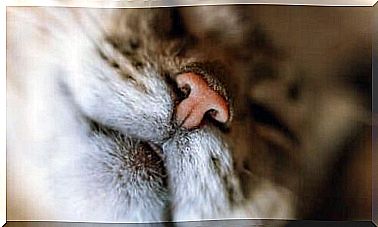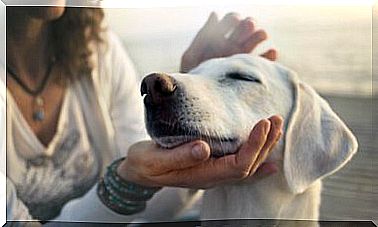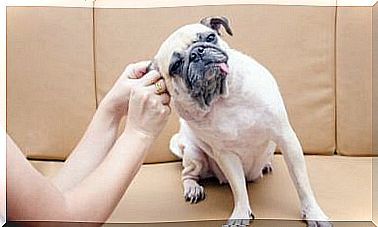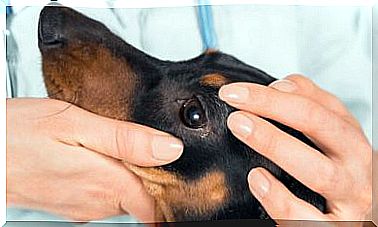Dermatitis In Dogs: How To Treat It?

Although it is more common in stray animals, dermatitis in dogs can occur in any four-legged friend due to various factors. In this article we will tell you more about this skin condition and how to treat it.
What is dermatitis in dogs?
It is a fairly common disease in all races. However, some breeds are more prone to it, such as the French Bulldog, Boxer, Golden Retriever, German Shepherd, and Labrador.
Dogs with long hair or those who live in hot and humid climates are at greater risk of developing dermatitis. This disease is recognizable in mild cases by irritation and reddening of the skin. If left untreated, hair loss and infection will occur.
Dermatitis in dogs can be caused by several factors, the characteristics of which are easily recognizable. The dog won’t stop scratching, licking or biting, its skin will become red and thicker. He’s constantly smelling bad, losing hair, having a scaling rash or a rash. He can also have ulcers, eczema, and ear infections.
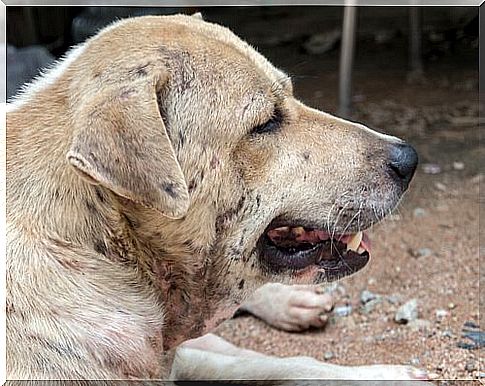
Types of dermatitis in dogs
For proper treatment, it is very important to know what type of dermatitis the animal is suffering from. These are:
1. Atopic or allergic dermatitis
This species is very common, especially if the animal has a genetic predisposition to develop allergies. Mites, flower pollen or an insect bite can cause such dermatitis.
The affected areas are the legs, face, abdomen, groin, and armpits. Increased itching, red skin, pimples, dryness and darkening of the affected area are the main symptoms. Veterinarians give medication in cream or gel form with antibacterial or moisturizing properties to help relieve itching.
2. Dermatitis due to skin fungus
Some breeds of dogs with “wrinkles,” such as the Shar Pei, Bulldog, or Napoletano Mastino, accumulate oil and moisture in this area, which is difficult to clean. This promotes the appearance of skin fungus and dermatitis results from it.
The main symptoms are hair loss, dryness, color changes in the coat, appearance of purulent sores and bad smell. In this case, it is best to treat with an external cream that removes the skin fungus. In order to prevent the recurrence of these microorganisms, it is absolutely necessary to administer the medication in full and, of course, to provide thorough hygiene.
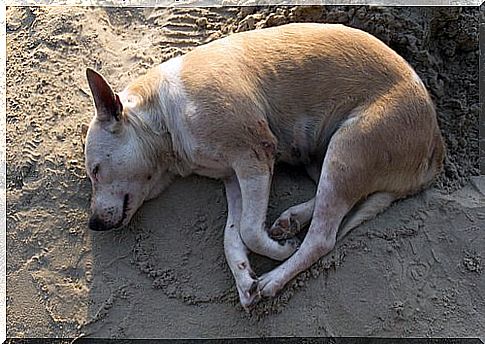
3. Contact dermatitis
This is another type of dog dermatitis that can affect any breed. Contact dermatitis occurs when the animal comes into contact with a harmful substance, such as: B. Disinfectants for floors, paints, chlorine for swimming pools, cleaning agents, etc.
The skin becomes inflamed, hardened and reddened. Scabs appear and the fur nose scratches and licks itself to soothe the itchiness. In doing so, the animal is often additionally injured until it bleeds. There is no specific treatment for this dermatitis. The most important thing is to remove the causes behind it so that the condition does not worsen.
4. Seborrheic dermatitis
It is a very common type of dermatitis in dogs that can result from excessive bathing, as it weakens the skin’s natural fat layer. It can also occur due to a food or environmental allergy.
Seborrheic dermatitis causes the skin to become increasingly oily and gives off a very intense odor. Psoriasis, reddening of the skin, and itching can also occur. The animal tries to get relief by scratching.
The treatment consists of baths with special products that allow the skin to recover. It is highly recommended that you pay attention to what feed the animal is receiving, as dyes or certain ingredients can worsen the condition.
Dermatitis in dogs must be treated with external, oral, or injectable drugs; this depends on the type and severity of the disease. The veterinarian can combine different medicines if necessary.

